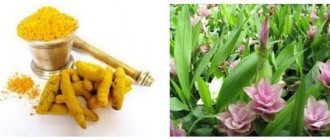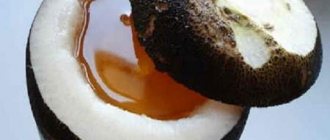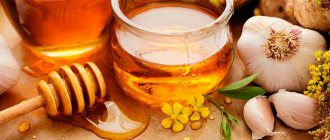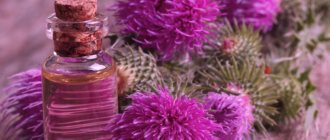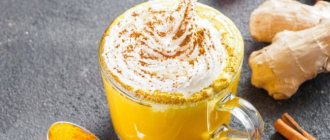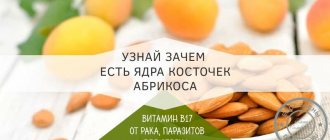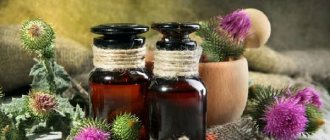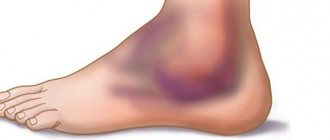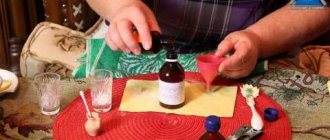Everyone without exception knows about the high nutritional properties of wheat. But few people know that due to the high content of nutrients in the grains, wheat also has medicinal properties. In addition to culinary uses, wheat germ seeds and oil are used for medicinal purposes and cosmetology. However, you should not assume that wheat is exclusively beneficial: when choosing products from this cereal, you need to be extremely careful. The benefits of wheat for humans and to whom it is contraindicated are discussed in detail in this material.
Description and composition of wheat grains
Pharmacy name for soft wheat (Triticum aestivum L.): wheat starch.
Parts used: grains (grain, flour, bran), straw.
Collection time: July-September.
Description of the plant: family Poaceae (Poaceae).
An annual grass with a height of 50-180 cm. The root system penetrates to great depths. The straw is thin, hollow inside, or filled with loose tissue, divided into nodes. The nodes are bare and may be pubescent in the early stages of development. The leaves are alternate, vaginal, encircling the stem, broadly linear, flat, 6-16 mm wide, at first soft, pubescent, then glabrous and hard. The inflorescence is a complex spike, with short awns (up to 15 cm) or awnless, which break off when ripe. The length of the ear is at least 3 times the width. The fruit is an oval grain 1.0-1.5 cm long and 0.3-0.5 cm wide. It has numerous varieties and varieties. Winter and spring forms are grown. Wheat is also divided into fodder varieties and food grades. Blooms in May-June. Fruits in July.
Special features: soft wheat is extremely polymorphic.
Chemical composition of wheat grain: various parts of the plant contain: apigenin; acetylcholine - fam., sprouts; vitamin B2 (riboflavin) - fruit. 0.11-0.12 mg%; vitamin B6 (pyridoxine, pyridoxole) - fruit. (embryos); vitamin E (alpha tocopherol) - germ 0.03 mg%; herniarine; nesodyn - fruit. 4.3-5.3 mg%; scopoletin; thiamine (vitamin B1, aneurin) - fruit. 0.43-0.66 mg%, germ 2 mg%; alpha- and beta-triticenes - pbg.; phytin - semolina. The composition of wheat grain also includes starch, proteins, enzymes, fat, fiber, phosphorus, potassium and magnesium.
Collection: the ears are cut, dried and threshed, then the grains are separated from the remaining straw by sifting.
Cultivation: the oldest agricultural crop, the basis of nutrition for residents of temperate and subtropical climates. Two types are cultivated - soft and durum wheat. Common wheat is mostly cultivated - winter and spring. Wheat is grown in nutritious, well-drained soil. Propagated in spring by sowing seeds, which germinate within a few days. The culture is demanding on moisture.
RECIPE FOR YOUR PIGGY BANK - WHEAT SPROUTS
At the moment of germination in wheat grains, the number of biologically active substances and vitamins, growth stimulants and the concentration of natural antibiotics increases several times. For example, vitamin E increases threefold, folic acid increases fourfold. vitamin C - 5 times, and vitamin B2 - 10 times. In addition, all nutrients are transferred into an easily digestible form, they do not overload the digestive tract. More benefit is not in green grown sprouts, but in white ones, 2-3 mm high, which are no more than 2-3 days old.
An infusion of sprouted wheat effectively improves digestion, and it treats both constipation and diarrhea, eliminates bloating: pour 100 g of sprouts into a glass, add 5 tbsp. Add water and leave for 24 hours, covered with a napkin. Strain and drink on an empty stomach, preferably in the morning. A week-long course will completely get rid of troubles.
Why wheat is beneficial for humans and recipes for folk remedies
People have known about the benefits of wheat grain since ancient times. A crumb of bread soaked in hot milk was applied to abscesses, tumors and hemorrhoids.
Due to its high beneficial properties, wheat is used in folk medicine as an internal and external remedy. A decoction of wheat bran with the addition of honey is drunk for respiratory diseases and used for laxative enemas.
A decoction of wheat grains has strengthening properties and is used when you need to restore strength after a serious illness.
A decoction and poultice of wheat bran is used as a cosmetic product that softens the skin.
The healing properties of wheat have also found application in official medicine: wheat starch is used in powders and ointments, as an enveloping agent in enemas, and in surgery - for fixed bandages made from starch bandages.
The nutritional properties of wheat grain are also high; it is the main food crop. Grain is processed into flour for the production of bakery and confectionery products, cereals, starch and other products. The highest flour yield is produced by varieties with large, rounded grains and shallow grooves. According to the baking qualities of soft wheat, varieties of strong wheat (durum grain), medium strength (fillers) and weak wheat are distinguished.
Durum wheat is used to produce flour, which is highly valued in the production of pasta. It is called semolina and durum.
Wheat starch is used in making Turkish delight.
Semolina is obtained from wheat kernels.
And from crushed wheat grains several varieties of wheat cereal are produced.
Wheat is also beneficial for animals. Feed grade grain is used for the preparation of compound feed and for feeding animals. When grain is added to the diet of pigs, alternating feeding with liquid and solid feed, a meat layer is formed in the lard.
Straw serves as a raw material for the production of paper, cardboard, and wickerwork.
Recipes for folk remedies based on wheat:
- Ground grains with decreased immunity: rinse 100 g of grains, soak in a small amount of water for 2-3 hours, dry with a napkin, grind in a meat grinder. Add 1 tablespoon each of honey and sour cream (you can use cream or milk). Take the resulting mixture in the morning on an empty stomach. The course of treatment is 1 month. The benefit of ground wheat grains is that they normalize intestinal function.
- Infusion for leukemia, anemia: 3 tablespoons of wheat bran per 1 glass of boiling water, leave for 2 hours. Take 1 tablespoon 3-4 times a day half an hour before meals.
- infusion for atherosclerosis: 1 tablespoon of bran per 1 glass of boiling water, leave for 30 minutes. Add another 1 glass of boiling water to the infusion and leave for another 10 minutes (daily dose), filter. Take 3-4 times after meals.
- bath infusion for psoriasis, skin rashes, eczema: pour 1.5 kilograms of bran with hot water and leave for 4 hours, filter. Take a bath for no more than 15 minutes. Do not dry yourself, dry off, put on soft home linen. The course of treatment is daily for 10 days. For a foot bath, use 250 g of bran.
- bran decoction for bladder ulcers: 200 g of bran per 1 liter of boiling water, boil for 1 hour, filter twice. Take 1/2-1 glass 3-4 times a day. The course of treatment is 1 month.
- bread, which in the old days was recommended for use for stomach ulcers: pour 0.5 liters of very hot boiled milk and a pinch of salt into 1 kg of good sifted wheat flour, knead the dough so that no grains remain. When the dough mixture has cooled, you need to add 50 g of bread yeast mixed in milk and, adding a little flour, knead the dough vigorously. You need to knead for 30 minutes. Leave the dough to rest. When the dough rises, it needs to be kneaded; this procedure is repeated 3 times. After kneading a third time, the settled dough is placed on a baking sheet greased with oil. The oven should be preheated to 200°C. The dough should not be left to rise, but placed straight into the oven. When the bread has doubled in size, brush it with warm water. In 30-45 minutes (depending on the size of the formed loaf), the bread will be ready. The patient can eat it only on the second day.
- An ancient healer's remedy for erysipelas: take 3 wheat ears during flowering and circle the sore spot with them 3 times. The next day, add 3 more spikelets and repeat the procedure. The affected areas will turn pale. On the third day, do the same. Three days and it will pass. In this case, you need to read prayers from the beginning of the procedure to the end. What prayers are unknown, so this procedure can only be carried out by knowledgeable people.
Health Benefits of Wheat
Crushed white wheat flour has virtually no beneficial properties. While eating whole grain wheat can have several decent benefits for the human body, except for those people who are allergic to gluten.
Gut Health
Whole grain wheat is rich in fiber, mostly insoluble, which is concentrated in large quantities in the bran.
Research shows that components of wheat bran may function as prebiotics, feeding beneficial bacteria found in the intestines ().
Also, most bran remains virtually unchanged as it passes through the digestive system and increases the weight of feces. Wheat bran can shorten the transit time of difficult-to-digest foods through the intestines and, conversely, increase the transit time of quickly digested foods. Thus, creating a balance of intestinal function.
One study found that bran may reduce the risk of constipation in children (). However, depending on the underlying cause of constipation, bran may not always be effective ().
Summary : The fiber in whole wheat (or bran) may promote gut health.
Whole wheat bread is good for your gut
Prevention of colon cancer
Colon cancer is the most common type of cancer of the digestive system.
Observational studies have shown that eating whole grains (including whole wheat) reduces the risk of colon cancer (,).
According to one observational study, people on a low-fiber diet could reduce their risk of colon cancer by 40% if they consumed more fiber (). This finding is supported by randomized controlled trials (), but not all studies found a significant protective effect ().
One thing is clear: Whole grain wheat is rich in fiber and contains a number of antioxidants and phytonutrients that may help prevent colon cancer.
Summary : Whole wheat or other fiber-rich whole grains may reduce the risk of colon cancer.
What you need to know when buying wheat bread
Despite its high beneficial properties, wheat also has contraindications for use. Treatment with this cereal cannot be carried out in case of diabetes and celiac disease (digestive disorder caused by damage to the villi of the small intestine by foods containing gluten (gluten) and related cereal proteins (avenin, hordein, etc.), these proteins are found in cereals such as wheat , rye, barley and oats).
What you need to know when buying wheat bread:
- When purchasing baked goods (if you have celiac disease), pay attention to the label. The label "wheat-free" does not mean that it is gluten-free. It may contain gluten from other grains. There is no scientific definition of “gluten-free.” In the West, it is legal to call products “gluten-free” if they contain less than 200 ppm of gluten. Some Western manufacturers comply with this standard.
- The list of gluten-containing products has recently expanded greatly, as flour (and often powdered pure gluten) began to be added to many types of sausages, cheeses, ketchups and other sauces, confectionery, in short, to any products that need to be thickened.
- Fresh, still warm bread and pies should not be taken for peptic ulcers of the stomach and duodenum.
- A contraindication to the use of wheat is its simultaneous use with preparations of iron, calcium, phosphorus, magnesium, zinc and other minerals. A time gap of 2 hours before or after taking semolina is necessary.
- The product baked by modern bakeries, called wheat bread, is poorly digested. On the first day, while it is fresh, it causes heartburn and heaviness in the stomach, quickly becomes stale and within a day can become covered with a barely noticeable film of mold. Do not rush to cut off the affected area - it is better to immediately throw away this entire dangerous product, because the mold has already managed to produce one of the varieties of aflatoxin.
- According to some cardiologists, modern modified varieties of wheat have the ability to increase blood glucose levels and stimulate appetite with the help of gluten breakdown byproducts contained in the grains, which have a narcotic effect, manifested in a constant desire to consume a huge amount of flour products. The result is an accumulation of fat, specifically in the waist area. Obesity in the peritoneal area actively contributes to the development of inflammatory processes, the production of low-density cholesterol, increased blood glucose levels, which in turn provokes acne, baldness and the formation of substances in the body that accelerate the aging process.
- The increased content of sulfur-containing amino acids in wheat leads to an increase in the production of sulfuric acid, which causes the leaching of beneficial minerals from bone tissue. According to cardiologists, modern modified wheat has become the cause of almost all degenerative diseases known to science.
- Another danger to humans and animals associated with baked goods is “drunk bread”. The reason for this is a weed growing in wheat and rye fields called intoxicating chaff. In the grains of the intoxicating chaff, the fungus stromantinia temulenta develops, producing the poisonous alkaloid temulin. Therefore, eating bread and feed with its admixture causes poisoning of people and domestic animals (except for chickens and ducks, pigs are sensitive to flaxseed weed).
- Another danger is trichodesmotoxicosis. Occurs when eating bread baked from flour containing Trichodesma incanum (Bunge) A. DC. seeds. A serious illness characterized by symptoms of damage to the central nervous system, very similar to those of encephalitis or meningoencephalitis. The admixture of Trichodesma sebaceous seeds with cereal grains is not allowed due to the content of the pyrrolizidine alkaloid incanine.
Wheat porridge: benefits and harms
Wheat dishes have always been present in our diet. This cereal is the main raw material for the production of different types of flour, which is used in the manufacture of a variety of baked goods, desserts, pasta, muesli, and breakfast cereals. Porridges made from chopped wheat grains are especially popular, because they saturate the body for a long time and supply the body with valuable fiber. The benefits of wheat porridge were known to our distant ancestors - the grain was stored in barns for a long time, and dishes made from whole or crushed grains delighted the peasants both on holidays and on weekdays.
Calorie content of wheat porridge
This cereal is produced from durum wheat by crushing polished grains. Soft varieties are not suitable for porridges - they contain a lot of gluten and are used mainly for making baked goods. During the production process, grains are cleared of the embryo, fruit and seed coats and crushed. The raw material is Durum wheat (a hard, high-quality variety).
Wheat grits are crushed grains of polished wheat, peeled from the fruit shells
Depending on the type of cereal, cereals can be of different colors. Sunny yellow groats are a sign that they were made from spring wheat, while groats made from winter cereals may have a grayish tint.
According to the type of crushing, wheat cereals come in several categories:
Poltavskaya (has 4 types of grinding - from coarse to fine)
Artek (finely crushed cereal)
Arnautka (the highest quality wheat cereal)
The benefits of wheat porridge lie in its nutritional value and high dietary fiber content. Dishes made from this cereal are included in the diet and children's diet - they are perfectly digestible and give the body maximum energy.
Wheat cereal is rich in the following substances:
- Carbohydrates
- Amino acids
- Squirrels
- Vegetable fats
- Sugar
- Cellulose
- Vitamins of groups PP, E, C, B6, B2, B1
- Macroelements (S, P, Cl, Na, K, Ca, Mg)
- Microelements (Fe, Zn, I, Cu, Se, Mo, B, V, Si, Co, Ni, Sn, Ti, Sr, Zr, Al, Ag)
100 g of dry cereal contains 325 kcal, but when cooked it boils and increases in volume. The nutritional value of a finished dish cooked in water is about 90 kcal.
Wheat porridge: contraindications
Despite the obvious benefits, wheat porridge can be harmful and cause unwanted reactions in the body. It is strictly not recommended for persons with individual intolerance to its components.
Wheat porridge is contraindicated in the postoperative period, for children under 3 years of age and for those with an individual intolerance to gluten grains.
Wheat porridge is contraindicated for people who have:
- Flatulence
- Low stomach acidity
- Gluten intolerance
- Gastritis
- Endocrine problems
- Pregnancy
Dishes made from this cereal are not recommended for people after any operations on internal organs, as well as during the recovery period after removal of appendicitis. Wheat porridge is contraindicated for children under 3 years of age. Men should not get carried away with dishes made from this cereal, as they can weaken potency.
The benefits of wheat porridge
Cereals should definitely be included in our diet, as they are highly nutritious and give a feeling of pleasant satiety for a long time. This is especially important for people who do hard work or experience severe physical or mental stress. Wheat porridge contains in its composition a huge number of unique elements that are necessary for daily activity and regeneration of our cells.
Dishes made from wheat cereal help maintain a feeling of fullness for a long time, and are also recommended for people exposed to mental and physical stress
Benefits of wheat porridge:
- Strengthens the immune system, heals the body and makes it resistant to colds and seasonal illnesses.
- Normalizes the functioning of digestive functions, helps overcome dysbiosis and constipation.
- Quickly eliminates fat deposits.
- Removes salts and harmful compounds.
- Improves metabolism.
- Increases skin elasticity, prevents aging, and has a positive effect on hair condition.
- Clears blood vessels of dangerous cholesterol.
- It nourishes muscles and supplies the body with energy, which is important for athletes and people whose activities involve physical labor.
- Useful for children (after 3 years of age), as it is a source of a huge amount of organic substances and vitamins that affect physical and mental development.
- Promotes normal functioning of the heart and brain.
The coarser the grind of wheat cereal, the more valuable substances a person will receive from dishes prepared on its basis. It is worth paying attention to the product labeling - the packaging should indicate that the cereal is made from durum cereals.
Recommendations
How to cook wheat porridge
Dishes made from this cereal do not have an exquisite taste and do not require special skills to prepare. However, even such a simple porridge can be served as casseroles, puddings, and be a component of vegetable stews, soups, salads and cutlets. If the contraindications of millet porridge do not concern you, you can safely include it in your diet and fill yourself with tasty and nutritious dishes.
Delicious wheat porridge is very easy to prepare - for variety you can add fruits, honey, raisins. Important!
A nationwide statistical study showed a sharp increase in the number of liver diseases. It is not yet known what is the catalyst for this problem. The Ministry of Health is considering 2 versions. Deterioration of the environment in the country and the production of harmful food products. While doctors strongly recommend prevention of liver diseases and regular... Read more >>>
To prepare healthy wheat porridge, you need to adhere to a clear algorithm of actions and remember the simple rules for cooking this cereal:
- Before putting cereal into water, it must be rinsed.
- To prepare a thick, crumbly dish, you need to observe the following proportions: take 2 cups of liquid (water or milk) per glass of dry cereal.
- To prepare viscous porridge, the amount of water needs to be doubled.
- It is best to cook this dish in high-quality thick-walled dishes.
- You can cook wheat porridge on the stove, in a slow cooker, steamer or oven.
- The washed cereal is poured into boiling water, then the power is reduced, and the porridge simmers for 30.40 minutes until ready.
- The cereal can be placed in cold water and brought to a boil, and then simmered under the lid.
- To taste, you can add salt, sugar, honey, fruits, raisins, dried apricots.
- Wheat porridge is especially tasty if it is seasoned with rich butter.
A special feature of wheat porridge is that when cooked, all its grains swell simultaneously, which guarantees excellent consistency and gives the dish an appetizing appearance.
Wheat porridge during breastfeeding
Wheat porridge is a source of natural fiber, a complex of vitamins and nutrients that will help a nursing mother during the difficult period of lactation. If the contraindications of wheat porridge do not apply to a woman, and she does not suffer from individual intolerance to cereals, she can introduce this dish into her diet immediately after the birth of the baby.
Wheat porridge is not recommended for nursing mothers whose babies suffer from gluten intolerance
Wheat porridge will have a beneficial effect on the digestion of a young mother, relieve her of constipation and remove unnecessary toxins from the body. Dishes based on this cereal will relieve hunger for a long time, normalize blood glucose levels and help the immune system cope with colds and viral diseases.
However, due to the considerable gluten content, wheat porridge is contraindicated for women if the child has been diagnosed with intolerance to this substance. In this case, dishes from other cereals (buckwheat, rice, oatmeal) are recommended.
Wheat porridge for weight loss
Many people don’t even realize how useful wheat porridge is for people who want to say goodbye to excess weight. A properly prepared dish will allow you to significantly reduce weight, intensively burn fat deposits and at the same time not experience a depressing feeling of hunger.
Wheat porridge fits perfectly into the diet of a person losing weight and will help you lose extra pounds
The benefits of wheat porridge for weight loss are explained by the fact that it regulates fat metabolism, starts the process of intestinal peristalsis, and relieves constipation and heaviness in the stomach.
To lose weight quickly, you need to adhere to the following rules:
- Porridge is cooked only in water.
- No spices, oil, sugar or salt are added during the cooking process.
- Wheat porridge is ideal for a nutritious breakfast and light dinner.
- The dish can be combined with boiled lean meat, fish, raw vegetables and unsweetened fruits.
- During the wheat porridge diet, you need to drink a sufficient amount of clean water.
It is best to cook a viscous dish and divide it into 5.6 doses per day. If you are very hungry, you can eat a few spoons of porridge between main meals. And so that the diet is not debilitating, you can combine it with various vegetables, fresh herbs, consume fermented milk products, herbal and green tea.
VredPolza.ru>
Benefits of wheat germ oil and recipes for use
Method for obtaining wheat germ oil: cold pressing, CO2 extraction, extraction using organic solvents or mixtures thereof. When using the cold pressing method, about 250 g of oil is obtained from 1000 kg of grain. It is produced from the very center of the germ of the wheat grain.
Part used: wheat germ flakes, which contain up to 14% fatty oil.
Benefits of wheat germ oil:
- It has a regenerating, moisturizing, softening, anti-inflammatory, wound-healing, cleansing, anti-cellulite effect.
- Stimulates metabolic processes, normalizes intracellular metabolism, supports the functions of muscles and glands in the body, improves the condition of both dry and oily skin. Also, the benefit of germ oil is that it helps improve complexion, rejuvenates the skin, keeps it elastic and fresh even in old age.
- Contains vitamin E, which is a natural antioxidant that slows down cell aging and eliminates inflammatory processes on the skin. It has great penetrating power and helps remove harmful substances from the body and skin.
- Suitable for daily care of the skin of the face and hands.
- Pak massage oil is not used. But in combination with others, it perfectly heals wounds, scars, and eliminates uneven skin. Good to use for dermatitis and sunburn. Perfectly restores skin texture. Improves blood circulation.
Therapeutic effect:
- The benefit of wheat oil is that it has an antioxidant, membrane-protective effect, and has a positive effect on the lipid spectrum of the blood.
- It has the ability to improve oxygen utilization and increase the level of ATP synthesis.
- The beneficial properties of wheat germ oil are also that it has antihypoxic, antioxidant and tonic effects, increases the body’s overall resistance, normalizes metabolism, has a beneficial effect on the condition of the skin and hair, improves reproductive function, and has a protective effect on the nervous system.
See what wheat germ oil looks like in these photos:
Other Uses: Is a natural antioxidant that helps preserve other vegetable oils. It is also valued in the food industry, both as a dietary product (for example, in soft gelatin capsules) and as a healthy edible oil.
Next, you will learn how you can use wheat germ oil.
Sprouted wheat: benefits and harms
Wheat does not require a ceremonial presentation - this grain is heading in the “golden” fields of our country, shimmering nobly under the sun. The culture has found application in many areas of production - pasta and bakery products are made from flour, and the oil of its germ grains is widely used in cosmetology. However, recently in the circles of healthy eating followers one can increasingly hear about the miraculous wheat sprouts and their beneficial effects on the body. What benefits does the body receive from consuming seeds with sprouts, and what are the harms of sprouted wheat?
Composition of sprouted wheat
This cereal in its natural form has enormous nutritional value. Wheat contains minerals, fiber, carbohydrates and proteins. This culture is rich in vegetable fats, vitamins and enzymes. But if you germinate wheat grain, the amount of valuable substances increases several times. Why?
Wheat is rich in healthy vitamins, fats, carbohydrates and amino acids
The fact is that during the process of seed growth, the enzymes contained in the cereal actively work. They break down their chemical constituents to form maltose from starch, amino acids from proteins and fatty acids from vegetable fats. A process similar to the digestion of food in the body occurs. As a result, we get “living food” that carries enormous energy potential.
Sprouted grains have enormous power since they were able to withstand the difficult struggle with microbes during the process of their birth. They charge the body with incredible tone, health, rejuvenate, give energy and vitality.
Our ancient ancestors knew about the wonderful power and benefits of sprouted wheat. In Ancient Rus', it was added to jelly and soups in order to strengthen the health of peasants during the sowing or harvest period. Nutritious sprouts were also eaten by the inhabitants of Ancient Egypt. Wealthy Egyptian women used sprouted grains to fight skin aging and maintain the natural beauty of their hair.
Harm of sprouted wheat
Disputes in the scientific world about the benefits and harms of sprouted wheat do not subside even today. It turned out that the grains contain a lectin protein, which, when ingested, interacts with sugar molecules and causes cells to “stick together.” When in its natural environment, lectin protects wheat seeds from harmful bacteria. But, if it enters a foreign organism, this substance can cause significant harm to it, namely:
- Damage the sensitive gastric mucosa;
- Cause metabolic problems;
- Have a toxic effect on the endocrine system.
Sprouted wheat is contraindicated for children under 12 years of age and people with digestive problems. The sprouts of this crop should not be consumed in the postoperative period, as well as by persons suffering from gluten allergies.
When sprouted, the healing properties of wheat grains increase several times.
You should not take seeds with sprouts at the same time as honey, mumiyo, golden root and milk. The interaction of these products can provoke allergic reactions and also cause flatulence.
To minimize the harm of sprouted wheat, it is important to consult a doctor before using it for the first time.
Sprouted wheat: benefits
This simple sprouted cereal has a unique healing effect. The undeniable advantage of wheat with sprouts is that it thoroughly cleanses the body of toxins, rejuvenates it, nourishes and strengthens the skin. Heaviness in the stomach, bloating - these problems are unfamiliar to a person who systematically consumes sprouted seeds.
Sprouted wheat rejuvenates the skin, gives energy and has a beneficial effect on metabolic processes in the body
This product enriches the body with energy and strength, and also has a number of valuable properties:
- Improves the structure of hair and nails;
- Strengthens the immune system;
- Promotes coordinated functioning of the stomach and intestines;
- Removes waste, toxins and cholesterol;
- Has a beneficial effect on the central nervous system, relieves stress;
- Improves brain functions;
- Enriches the blood with oxygen and beneficial microelements;
- Normalizes blood sugar levels;
- Restores vision;
- Helps in the fight against anemia in women;
- Promotes normal metabolism.
The enormous benefit of sprouted wheat lies in its anti-inflammatory and regenerating effect. It is able to activate the process of gradual resorption of neoplasms (fat, polyps, fibroids). Due to these features, seeds with sprouts are widely used by doctors as a prophylactic agent in the fight against malignant tumors.
Sprouted wheat for weight loss
Nutritionists advise introducing wheat sprouts into your diet in order to lose excess weight. The calorie content of one hundred grams of cereal is 198 calories, so it can easily be included in the list of dietary products.
The benefit of wheat germ during weight loss lies in its ability to dull the feeling of hunger. Thanks to the impressive fiber content, the body does not absorb harmful fats and cholesterol accumulated in the body - these substances are quickly eliminated.
Sprouted wheat seeds contain 198 calories per 100 grams, so they can be easily introduced into the diet of people who are struggling with excess weight. Important!
Proctologists have presented a completely new unique method of treating hemorrhoids. Studies have shown that the remedy is so effective that after a few weeks even the most advanced form of the disease enters the resting phase and begins... Read more >>>
Sprouted wheat on an empty stomach is especially useful. When you take grains in the morning, digestion improves, the intestines are cleansed, and the functioning of the gastrointestinal tract returns to normal. And at the same time, metabolic processes in the body are accelerated, promoting the elimination of toxins and the evaporation of extra pounds.
However, it should be remembered that the diet should be enriched with young sprouts, without excluding useful products for life, otherwise such a diet can only cause harm. It is also better to remove smoked meats, baked goods and fatty foods from daily consumption, and replace dinner with a light dish made from sprouted wheat. As a result, you will not only get rid of excess weight, but also rejuvenate your body, charge it with vital energy and tone.
Recommendations
How to germinate grain
To obtain sprouted grains, you need to take 100-200 grams of cereal, pour it into a glass container, cover with a piece of gauze and add water (it is best to take cooled boiled water). It is necessary that all seeds are covered with water and receive sunlight. It is best to place the dish on the windowsill, but you need to make sure that the air temperature in the room is not higher than +20 degrees.
As the wheat sprouts, remove the gauze and add water so that all the grains are evenly moistened. When the length of the sprouts reaches 2-3 mm, the germination process must be stopped. To do this, the wheat is removed from the container, washed with warm boiled water and dried a little. Healing sprouted grains are ready to eat.
You can easily germinate seeds at home
To obtain nutritious sprouted wheat seeds at home, you do not need any special knowledge or skills. However, you should adhere to some simple rules, such as:
- Wheat for germination should only be purchased at a pharmacy. Unscrupulous producers may add harmful pesticides during the growing process and sell seeds that are hazardous to health. Pharmacy products undergo a number of checks and quality tests.
- Grains that have not sprouted after two or three days should be thrown away without regret. They will not bring benefits to the body.
- Never cook grains for future use - you can store sprouted wheat in the refrigerator for no more than a day.
- If during the germination process you notice darkened grains, they should be discarded.
- The maximum length of sprouts allowed is 1-3 mm. Overripe seeds lose their healing properties and may taste bitter.
Of course, there is no need to perceive wheat sprouts as a miracle cure for all diseases and expect the effect after only a week of use. The benefits of sprouted wheat will be noticeable only after long-term, correct use. A balanced diet with the gradual introduction of this grain into your diet will give you excellent health, healthy hair, obvious skin rejuvenation and vigor.
Take care of your health, eat right, focus on healthy and nutritious foods, and do not neglect physical activity. Health is priceless, and a competent approach to preserving it will allow you to be young for a long time and endlessly enjoy life!
VredPolza.ru>
How to use wheat germ oil
Application methods:
- as an additive in mixtures: no more than 5-10% of the entire mixture, helps keep other carrier oils from going rancid;
- in its pure form and as a base: it is not recommended to use it, because it is rich and heavy, it is necessary to mix in equal quantities or 1:2 with lighter oils - almond, peach, apricot, grape seed, watermelon (unless otherwise indicated) ). It is better to mix several types of oils, where wheat germ oil will make up 10%;
- oil for nourishing aging skin: apply in its pure form to damp skin with light massaging movements, after 25-30 minutes, if the oil remains on the skin, blot with a napkin;
- oil for the care of flaky, dry skin of the face and lips: use wheat germ oil in its pure form or with the addition of lemon balm, rose and lime essential oils, taken 1-2 drops per 1 tablespoon of base. Lubricate the skin 2-3 times a day, lightly massaging;
- massage: mix with carrier oils and essential oils for more effective massage of dry skin or keloid scars up to 5%;
- for cellulite: to 1 tablespoon of wheat germ oil, add 3-5 drops of a mixture of orange, tangerine or grapefruit essential oils, taken in equal proportions, or 1 drop each of geranium, juniper, lemon and fennel essential oils. Carry out a firm massage of problem areas of the skin;
- orally: 1 ml every day for better blood circulation, improved skin cell function and elimination of bad cholesterol.
Synergy:
- for dehydrated and overdried skin: neroli essential oil, jasmine absolute, vanilla vegetable oil;
- burns (including sunburn), scars, sunstroke: lavender;
- prevents and relieves stretch marks and scars: tangerine, vegetable oil from rosehip seeds.
The beneficial properties of wheat germ oil last from 1 to 2 years. Store in an airtight, tightly closed, dark container in a cool place. After opening, store only in the refrigerator.
An increase in viscosity is possible, followed by the formation of a white precipitate; this usually occurs with sudden temperature changes, as well as at storage temperatures from 0°C to +20°C. Elimination method: heat to +23°C in a water bath or leave in a room for 2-4 hours.
Precautions when using wheat germ oil with active properties: individual intolerance. Do not use a high concentration solution for people suffering from allergies.
Application of wheat
Wheat is used to treat various diseases and eliminate problems with the functioning of the body. Corn:
- will help cope with obesity;
- improves metabolism;
- will act as a preventive agent for type 2 diabetes;
- reduce chronic inflammation;
- will prevent the formation of gallstones;
- will reduce the risk of breast cancer;
- strengthens the health of the gastrointestinal tract;
- will prevent asthma in children;
- will protect the body from coronary disease and improve brain function.14
The benefits of herbal medicine products made from wheat grains
The medicinal properties of wheat are widely used in herbal medicine.
Wheat germ protein.
A lifting and moisturizing product for any skin type, it also adds shine to hair, strengthens and improves hair structure, and strengthens nail plates. Let's dissolve in water. It is introduced into cosmetics up to 2% for skin and up to 5% for hair. Contraindications: not systematized.
Dry wheat germ extract.
Anti-aging, rejuvenating, pore-tightening, decongestant, regenerating agent for any skin type, also strengthens nail plates and strengthens hair. Can be used for the skin around the eyes. Relieves swelling, peeling, redness, and tightens pores well. A fine green powder with a weak odor and a sweetish taste, soluble in water, moderately in glycerin and aqueous-alcohol solutions. It is introduced into cosmetics from 1 to 5%.
Contraindications: not systematized.
Emulsifying wheat wax.
Emulsifier of plant origin in the form of small granules of light yellow color, soluble in an oil base. Used to prepare creams, milk, ointments and lotions for any skin type. Retains up to 60% of the oil part, allowing you to obtain homogeneous high-quality emulsions. Has a light moisturizing effect. It is introduced into cosmetics from 2 to 5%.
Contraindications: not systematized.
Wheat gluten hydrolyzate.
The benefit of this herbal medicine product made from wheat grain is that it adds volume and shine to hair, improves the structure of dry hair, softens, nourishes and moisturizes dry and dehydrated skin. Heat stable, soluble in water. The hydrolyzate has a high moisturizing ability, restores skin microrelief and eliminates sagging, softens rough skin, regulates the water balance of the upper layer of skin, and is also effective in products for moisturizing hair along the entire length. It is introduced into cosmetic preparations from 2 to 5%.
Contraindications: not systematized.
Supercritical CO2 wheat germ extract.
An oily mass of yellow-green or amber-yellow color with a distinct, specific characteristic odor. It is used in cosmetic products as an anti-inflammatory and moisturizing agent. It is used in cosmetic products as an anti-inflammatory and moisturizing agent. In toothpastes it is used to strengthen and nourish the oral mucosa, gums and teeth. Promotes the healing of minor injuries, protects against periodontal disease, gingivitis, stomatitis and caries. In soap it has an antiseptic effect and helps prevent inflammatory processes, protects the lipid layer of the skin. It is introduced into the soap base along with fragrance and dyes. In creams it is used to enrich any skin of the face, neck and body with vitamins, allowing to extend the shelf life of products. In shampoos it provides hydration to hair, gives it elasticity, smoothness and shine. The extract is added after dissolving the surfactants and adding glycerin. It is introduced into cosmetics from 0.01 to 0.5%. For people under 25 years of age, the extract intake rate is up to 65% of the usual rate, children (from 7 to 14 years old) - 50%.
Contraindications: not systematized.
Sprouted wheat benefits, beneficial properties, composition
A healthy person is a happy person!
It is perhaps difficult to disagree with this statement. What is the secret to good health and longevity? Scientists around the world still cannot find the answer to this question, while our ancestors knew the answer perfectly well - this is sprouted wheat. The medicinal properties of sprouted wheat have been used since the times of Hippocrates and Avicenna, adding it to the main diet. It perfectly regulates almost all metabolic processes in our body, the functioning of many organs and systems. Let us try to figure out why sprouted wheat is so valuable, its benefits, beneficial properties, the composition of its grains and how you can use them to preserve or improve your already weakened health.
Composition of sprouted wheat grains
It contains 18 amino acids that are not produced in the human body, that is, they are non-essential.
B vitamins (B1, B2, B3, B6), nicotinic acid, macro, microelements, minerals (sulfur, magnesium, phosphorus, silicon, potassium, silicon, chlorine, zinc, aluminum, copper, fluorine, chromium, titanium).
Vitamin C is found in sprouted wheat in an easily accessible form for the body, which significantly enhances its medicinal properties.
Biotin is necessary for the metabolism of fats and carbohydrates in the human body, but it does not work on its own, only in combination with B vitamins.
Choline is not a constant vitamin; it is needed for the metabolism of fats in the liver and the transmission of nerve impulses along nerve endings.
Vitamin E is a powerful, natural antioxidant; it protects the cells of our body from the harmful effects of active oxygen molecules, from stress, strengthens blood vessels, reduces the risk of blood clots, increases muscle strength, and regulates the synthesis of most hormones.
Fiber and pectins are the main part of plant foods. They are not digested in the gastrointestinal tract, but play a huge role in the functioning of the body.
Medicinal benefits of sprouted wheat
Due to its composition, sprouted wheat has unique medicinal properties; it can be used to treat and prevent a large number of diseases.
The functioning of the gastrointestinal tract is normalized due to the high fiber content in sprouted wheat grains. Once in the human intestines, fiber swells, absorbs liquid, and with it most toxins; in addition, it adsorbs bile acids and “bad” cholesterol. Fiber improves intestinal motility and slows down the absorption of carbohydrates and fats. The benefit of wheat is that its fiber indirectly serves as a prevention of diabetes.
Wheat germ is great for helping people lose weight.
Pectins normalize the intestinal microflora, which is especially important for people suffering from dysbacteriosis.
Thanks to vitamin E, our body is able to resist many infections. It inhibits oxidative reactions that destroy our undamaged healthy cells. It is the oxidation process that leads to a general weakening of the body, its tendency to infections and the development of many chronic diseases (arthritis, heart and vascular diseases, disruption of the immune system, oncological pathology, etc.).
B vitamins are also antioxidants; in addition, they regulate the metabolism of carbohydrates and fats. Vitamin B2 is involved in the processes of cellular respiration, antibody synthesis and the formation of red blood cells.
The medicinal properties of sprouted wheat grains are not limited to this. With regular consumption of sprouted grains as a biologically active food additive, the human body as a whole is cleansed and healed, and not just one organ taken separately. Sprouted wheat grains are a vital stimulant, a source of life-giving force.
What properties of the body improve under the therapeutic influence of sprouted wheat grains?
• The functioning of the immune system improves.
• Recovery processes are accelerated.
• It helps the body fight many infectious diseases.
• Metabolism is normalized.
• The functioning of many organs and systems improves: nervous, cardiovascular, reproductive, endocrine.
• The functioning of the gastrointestinal tract is regulated.
• The healing of wounds, ulcers on the skin and mucous membranes will be accelerated.
• Color vision improves.
• Teeth and nails are strengthened, hair growth and structure are improved.
• The blood is purified, waste and toxins are removed from the body.
• Prevention of vitamin deficiency, anemia, premature aging, cancer.
• “Bad” cholesterol and bile acids are removed from the body, thereby preventing cardiovascular diseases.
• Help fight obesity.
A course of therapeutic nutrition is carried out no more than 2 times a year, with a total duration of about 2 months. Autumn-winter is best for this. Before starting a course of therapeutic nutrition with sprouted wheat grains, be sure to consult with your doctor.
Sprouted wheat is easily digestible and contains almost all the vitamins and minerals the body needs. The optimal ratio of carbohydrates and proteins only enhances all its properties. If you periodically add sprouted wheat to your diet, then thanks to its medicinal properties you will not be afraid of any diseases.
rasteniya-lecarstvennie.ru>
Properties of wheat germ oil and recipes for use in cosmetology
Wheat germ oil is used in cosmetology due to such properties as the ability to provide regenerating, softening, moisturizing, antioxidant, anti-inflammatory and anti-cellulite effects on aging, combination, dry and normal skin, as well as dry hair. 5-10% is introduced into cosmetics.
Contraindications: individual intolerance to oil is possible. Contraindications: not systematized.
Recipes for using wheat germ and grain oil in home cosmetology:
- Oil for hand care, eliminates peeling, minor damage, gives the skin of the hands softness, elasticity, firmness: use in pure form or with the addition of essential oils of lavender and bergamot, taken 1-2 drops per 1 tablespoon of base. Wheat germ oil is used in cosmetology for a light massage after each hand washing.
- Mask for hair loss: wheat germ oil is used in pure form or in a mixture with jojoba oil (1:1); or with the addition of 2-3 drops of ginger and pine essential oils to 1 tablespoon of base; or 2 drops each of eucalyptus, orange and cedar; or 2 drops each of thyme, lime and orange. Use of wheat germ oil in cosmetology: apply to hair 15-20 minutes before washing. Wash off with warm water, preferably not with shampoo, but with natural soap. Rinse your hair with a vinegar tincture made from herbs that suit your skin.
- Whitening mask for spots on the face, freckles, unclean skin: use wheat germ oil in its pure form or with the addition of essential oils of lemon, juniper, grapefruit or bergamot, taken 1 drop per 1 tablespoon of base. Apply wipes soaked only in oil to areas of the skin 1-2 times a day for 15-30 minutes. Rinse off with warm water;
Contraindications: allergy to wheat.
Contraindications for treatment with wheat
When treating with wheat, diabetes is considered one of the contraindications . The product baked by our bakeries, called wheat bread, weighs heavily on a sore stomach and intestines. On the first day, while it is fresh, it causes heartburn and heaviness in the stomach, quickly becomes stale and within a day can become covered with a barely noticeable film of mold. Do not rush to cut off the affected area - it is better to immediately throw away this dangerous product, because the mold has already managed to produce one of the varieties of aflatoxin, a dangerous biological This is a factor that gradually leads to destructive work in the body, subsequently causing serious illnesses, including cancer.
Latest entries in the category:
Susak umbrella
Plum
Millet
Fraxinella
Black currant
Ginseng. Ginseng preparations
Calamus marsh
Orchis spotted. Cuckoo's tears
Wheat
Ranunculus anemone
Recipes from starch and wheat bran in home cosmetology
Recipes for using starch and wheat bran in cosmetology:
- Softening and tightening mask for oily skin: whisk 1 egg white, add 1 teaspoon of honey and 1 teaspoon of starch. Apply the mixture to the skin, duration of the procedure is 15-20 minutes, rinse with warm water, rinse with cool water.
- Firming mask for oily skin: whisk 1 egg white, add 1 teaspoon of starch and beat again. Apply the mixture to the skin, duration of the procedure is 15-20 minutes, rinse with warm water, rinse with cool water.
- Mask for aging dry skin: mix 2 tablespoons of rich sour cream, 2 tablespoons of wheat bran and 2 teaspoons of honey, apply the mixture to the skin, duration of the procedure is 20 minutes, rinse with warm water, rinse with cool water.
- Toning and cleansing mask: gradually pour hot water into 2 tablespoons of starch in small portions, constantly stirring vigorously, until it becomes thick sour cream. Apply the mixture to the skin, duration of the procedure is 15-20 minutes, rinse with warm water, rinse with cool water.
- Wheat bran mask in cosmetology: for dry skin: mix 2 tablespoons of bran with warm milk. Leave the mixture until the bran swells, apply the resulting mass to the skin, duration of the procedure is 15-20 minutes, rinse with warm water, rinse with cool water.
- Mask for dry skin: mix 1 egg yolk with 5 teaspoons of bran, add water until you get a soft consistency. Apply the mask to the skin, duration of the procedure is 30 minutes, rinse with warm water, rinse with cool water.
- Mask for oily, porous skin: sweep 3 tablespoons of bran, 2 tablespoons of fresh tomato juice with pulp and 1 teaspoon of yarrow infusion, apply the mixture to the skin, duration of the procedure is 15-20 minutes, rinse with warm water, rinse with cool water.
- Mask for aging oily skin: beat 1 egg white into foam, mix with 1 teaspoon of lemon juice, add bran until a thick mass is obtained, apply to the skin, duration of the procedure is 15-20 minutes, rinse with warm water, rinse with cool water.
- Bran decoction: 300 g of bran per 300 liters of water, bring to a boil, leave until cool, filter. Use as a soothing product for irritated skin and soften rough skin for baths, washing, wiping, lotions, a base for skin creams and masks, as well as for freezing cosmetic ice.
Source: 5lepestkov.com
Chemical composition of grain
Wheat is a herbaceous plant with a straight, dense stem, flat leaves and an ear that firmly holds the grains. Today there are more than 20 varieties of this crop. The variety determines the structure of the straw, the appearance of the ear and the features of its formation. Depending on the variety, the chemical composition of the grain also varies, but it is possible to identify elements that are present in any type of wheat and determine its benefits and harms:
- vitamins (group B, group K, nicotinic acid, folic acid, choline, etc.);
- minerals (silicon, vanadium, boron, copper, magnesium, selenium, lithium, iron, etc.);
- essential amino acids (phenylalanine, tryptophan, valine, isoleucine, etc.);
- nonessential amino acids (proline, glutamic acid, etc.);
- fatty acids (omega-6, omega-3, etc.);
- cellulose;
- pectin;
- nitrogenous substances;
- starch.
